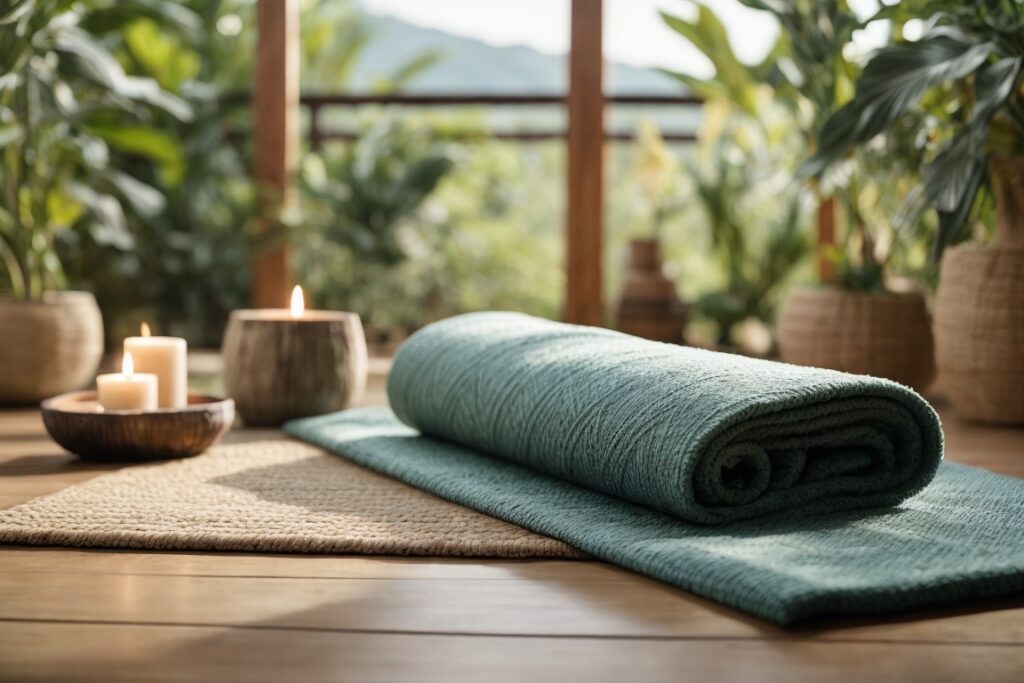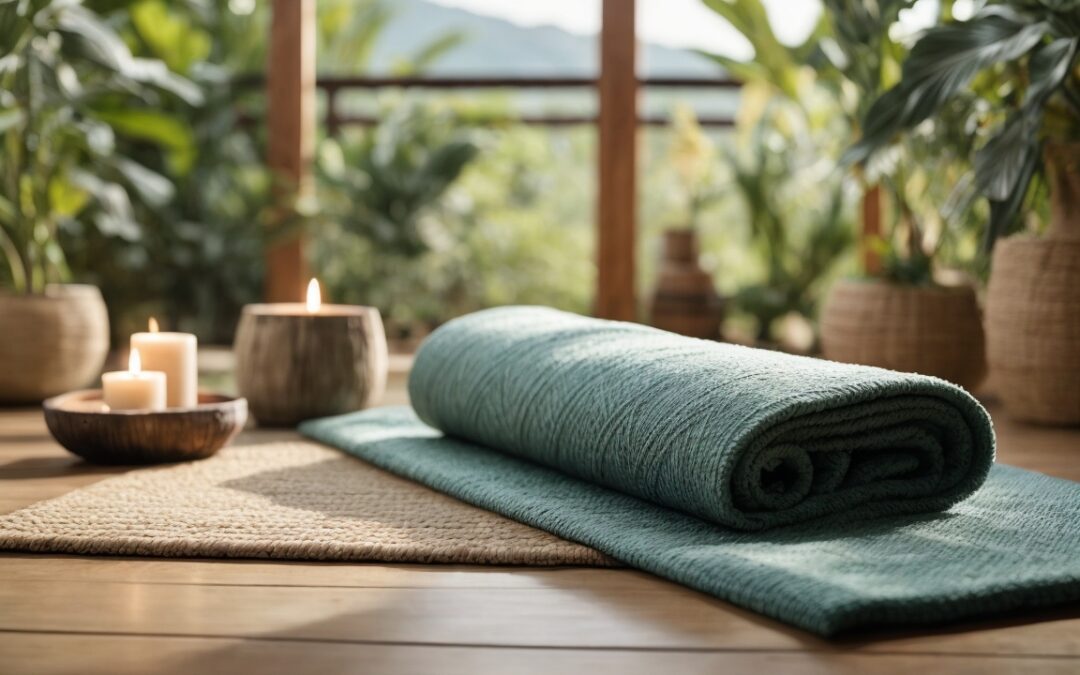Why Eco-friendly Yoga Rugs are the Future
As the global yoga community evolves, there’s been a notable shift towards eco-conscious practices. More than ever, practitioners are seeking a deeper connection not only with themselves but also with the environment around them. This growing awareness has led to the rise of eco-friendly yoga rugs, seamlessly blending sustainability with the ancient art of yoga.

Environmental benefits of using sustainable materials in yoga rugs
Yoga rugs, an essential tool in this ancient practice, are now at the forefront of this eco-conscious movement. But why are eco-friendly yoga rugs gaining such traction? Let’s delve into the environmental benefits of using sustainable materials in yoga rugs.
Reduced Carbon Footprint
Traditional yoga rugs often involve processes that emit a significant amount of carbon dioxide. In contrast, eco-friendly yoga rugs are typically made using energy-efficient methods, resulting in a much lower carbon footprint. By choosing these rugs, you’re actively contributing to a reduction in harmful greenhouse gasses.
Biodegradability
One of the standout features of eco-friendly yoga rugs is their biodegradability. Unlike synthetic materials that can take centuries to decompose, natural materials used in eco-friendly yoga rugs break down much faster, reducing landfill waste.
Conservation of Resources
Eco-friendly yoga rugs are often made from renewable resources like organic cotton or jute. These materials are grown without the use of harmful pesticides, ensuring soil health and conserving water.
Reduced Toxins
The production of conventional yoga rugs can release toxins into the environment. Eco-friendly yoga rugs, on the other hand, are manufactured without harmful chemicals, ensuring cleaner air and water.
Promotion of Sustainable Practices
By supporting and purchasing eco-friendly yoga rugs, consumers send a strong message to manufacturers about the demand for sustainable products. This can lead to more companies adopting eco-friendly practices, creating a ripple effect throughout the industry.
Enhanced Connection with Nature
Using an eco-friendly yoga rug can deepen your connection to the Earth during practice. Knowing that your rug was made with respect for the environment can enhance mindfulness and gratitude.
Economic Benefits
While eco-friendly yoga rugs might have a higher upfront cost, their durability and longevity often mean they last longer than traditional rugs. This makes them a cost-effective choice in the long run.

The Health Benefits of Eco-friendly Yoga Rugs
In the world of yoga, the tools we use to aid our practice are just as crucial as the poses we perfect. Among these tools, yoga rugs hold a special place, providing comfort, grip, and a touch of personal style to our sessions. But as the global community becomes more health-conscious and environmentally aware, there’s a growing shift towards eco-friendly yoga rugs. Let’s explore the health benefits of these sustainable alternatives and understand the risks associated with traditional, synthetic yoga rugs.
Natural Materials, Natural Benefits
Eco-friendly yoga rugs are crafted from natural materials like organic cotton, jute, and natural rubber. These materials not only have a minimal environmental impact but also offer several health benefits:
- Hypoallergenic Properties: Natural fibers are less likely to cause allergic reactions. This makes eco-friendly yoga rugs ideal for those with sensitive skin or respiratory issues.
- Breathability: Materials like organic cotton are breathable, ensuring that the rug remains fresh and reduces the risk of mold or mildew, which can be harmful to health.
- Non-toxic: Eco-friendly yoga rugs are free from harmful chemicals and dyes. Practicing on a chemical-free surface ensures that you’re not inhaling or coming into contact with potential toxins during your sessions.
The Risks of Synthetic Yoga Rugs
While synthetic yoga rugs might be readily available and often more affordable, they come with certain health and environmental risks:
- Release of Volatile Organic Compounds (VOCs): Many synthetic rugs release VOCs, which can lead to indoor air pollution. Prolonged exposure to VOCs can cause headaches, dizziness, and respiratory problems.
- Allergens and Irritants: Synthetic materials can sometimes irritate the skin, leading to rashes or allergic reactions.
- Chemical Treatments: To make them more durable or colorful, synthetic rugs often undergo chemical treatments. These chemicals can leach out over time, posing potential health risks.
Making the Switch
Transitioning to an eco-friendly yoga rug is not just an environmentally conscious decision but also a step towards a healthier yoga practice. By choosing natural materials, you’re ensuring that your practice space is free from harmful chemicals and irritants. Moreover, the tactile feel of natural fibers under your hands and feet can enhance your connection to the earth, deepening your practice.

Embracing Sustainability: The Future of Yoga Practice
As the ancient practice of yoga continues to evolve in the modern world, the tools we use must reflect the principles of health, mindfulness, and respect for nature. Eco-friendly yoga rugs, with their myriad health benefits, are a testament to this evolution. By embracing these sustainable alternatives, we’re not only nurturing our health but also taking a step towards a more harmonious relationship with our planet.

